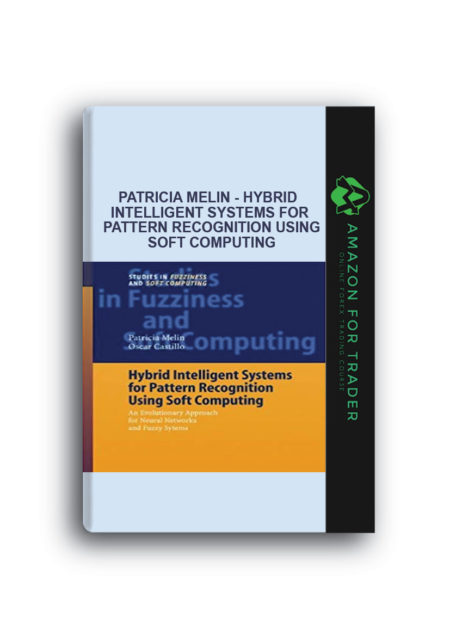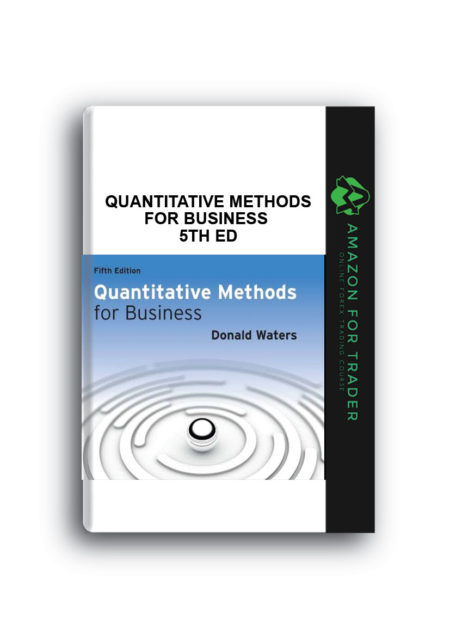Description
Elisa T.Lee, John Wenyu Wang – Statistical Methods for Survival Data Analysis
Description
Praise for the Third Edition
“. . . an easy-to read introduction to survival analysis which covers the major concepts and techniques of the subject.” —Statistics in Medical Research
Updated and expanded to reflect the latest developments, Statistical Methods for Survival Data Analysis, Fourth Editioncontinues to deliver a comprehensive introduction to the most commonly-used methods for analyzing survival data. Authored by a uniquely well-qualified author team, the Fourth Edition is a critically acclaimed guide to statistical methods with applications in clinical trials, epidemiology, areas of business, and the social sciences. The book features many real-world examples to illustrate applications within these various fields, although special consideration is given to the study of survival data in biomedical sciences.
Emphasizing the latest research and providing the most up-to-date information regarding software applications in the field, Statistical Methods for Survival Data Analysis, Fourth Edition also includes:
- Marginal and random effect models for analyzing correlated censored or uncensored data
- Multiple types of two-sample and K-sample comparison analysis
- Updated treatment of parametric methods for regression model fitting with a new focus on accelerated failure time models
- Expanded coverage of the Cox proportional hazards model
- Exercises at the end of each chapter to deepen knowledge of the presented material
Statistical Methods for Survival Data Analysis is an ideal text for upper-undergraduate and graduate-level courses on survival data analysis. The book is also an excellent resource for biomedical investigators, statisticians, and epidemiologists, as well as researchers in every field in which the analysis of survival data plays a role.
Table of Contents
Preface xi
1 Introduction 1
1.1 Preliminaries 1
1.2 Censored Data 2
1.3 Scope of the Book 5
2 Functions of Survival Time 8
2.1 Definitions 8
2.2 Relationships of the Survival Functions 15
Exercises 16
3 Examples of Survival Data Analysis 19
3.1 Example 3.1: Comparison of Two Treatments and Three Diets 19
3.2 Example 3.2: Comparison of Two Survival Patterns Using Life Tables 26
3.3 Example 3.3: Fitting Survival Distributions to Tumor-Free Times 28
3.4 Example 3.4: Comparing Survival of a Cohort with that of a General Population — Relative Survival 30
3.5 Example 3.5: Identification of Risk Factors for Incident Events 33
3.6 Example 3.6: Identification of Risk Factors for the Prevalence of Age-Related Macular Degeneration 38
3.7 Example 3.7: Identification of Significant Risk Factors for Incident Hypertension Using Related Data (Repeated Measurements) in a Longitudinal Study 46
Exercises 54
4 Nonparametric Methods of Estimating Survival Functions 68
4.1 Product-Limit Estimates of Survivorship Function 69
4.2 N elson–Aalen Estimates of Survivorship Function 82
4.3 Life-Table Analysis 83
4.4 Relative Survival Rates 96
4.5 Standardized Rates and Ratios 98
Exercises 104
5 Nonparametric Methods for Comparing Survival Distributions 108
5.1 Comparison of Two Survival Distributions 108
5.2 The Mantel and Haenszel Test 123
5.3 Comparison of K (K > 2) Samples 128
Exercises 130
6 Some Well-Known Parametric Survival Distributions And Their Applications 133
6.1 Exponential Distribution 133
6.2 Weibull Distribution 138
6.3 Lognormal Distribution 143
6.4 Gamma, Generalized Gamma, and Extended Generalized Gamma Distributions 148
6.5 Log-Logistic Distribution 153
6.6 O ther Survival Distributions 155
Exercises 159
7 Estimation Procedures for Parametric Survival Distributions Without Covariates 161
7.1 General Maximum Likelihood Estimation Procedure 161
7.2 Exponential Distribution 165
7.3 Weibull Distribution 178
7.4 Lognormal Distribution 180
7.5 The Extended Generalized Gamma Distribution 183
7.6 The Log-Logistic Distribution 184
7.7 Gompertz Distribution 185
7.8 Graphical Methods 186
Exercises 203
8 Tests of Goodness-of-Fit and Distribution Selection 206
8.1 Goodness-of-Fit Test Statistics Based on Asymptotic Likelihood Inferences 207
8.2 Tests for Appropriateness of a Family of Distributions 210
8.3 Selection of a Distribution by Using BIC or AIC Procedure 216
8.4 Tests for a Specific Distribution with Known Parameters 217
8.5 Hollander and Proschan’s Test for Appropriateness of a Given Distribution with Known Parameters 220
Exercises 224
9 Parametric Methods for Comparing Two Survival Distributions 226
9.1 Log-Likelihood Ratio Test for Comparing Two Survival Distributions 226
9.2 Comparison of Two Exponential Distributions 229
9.3 Comparison of Two Weibull Distributions 234
9.4 Comparison of Two Gamma Distributions 236
Exercises 237
10 Parametric Methods for Regression Model Fitting and Identification of Prognostic Factors 239
10.1 Preliminary Examination of Data 240
10.2 General Structure of Parametric Regression Models and Their Asymptotic Likelihood Inference 242
10.3 Exponential AFT Model 246
10.4 Weibull AFT Model 255
10.5 Lognormal AFT Model 258
10.6 The Extended Generalized Gamma AFT Model 261
10.7 Log-Logistic AFT Model 264
10.8 O ther Parametric Regression Models 268
10.9 Model Selection Methods 270
Exercises 279
11 Identification of Risk Factors Related to Survival Time: Cox Proportional Hazards Model 282
11.1 The Proportional Hazards Model 282
11.2 The Partial Likelihood Function 285
11.3 Identification of Significant Covariates 302
11.4 Estimation of the Survivorship Function with Covariates 309
11.5 Adequacy Assessment of the Proportional Hazards Model 317
Exercises 334
12 Identification of Prognostic Factors Related to Survival Time: Non-Proportional Hazards Models 337
12.1 Models with Time-Dependent Covariates 337
12.2 Stratified Proportional Hazards Model 346
12.3 Competing Risks Model 350
12.4 Recurrent Event Models 353
12.5 Models for Related Observations 370
Exercises 382
13 Identification of Risk Factors Related to Dichotomous and Polychotomous Outcomes 384
13.1 Univariate Analysis 385
13.2 Logistic and Conditional Logistic Regression Model for Dichotomous Outcomes 392
13.3 Models for Polychotomous Outcomes 421
13.4 Models for Related Observations 432
Exercises 440
Appendix 443
References 466
Index 477
Author Information
ELISA T. LEE, PhD, is Regents Professor and George Lynn Cross Research Professor of Biostatistics and Epidemiology and Director of the Center for American Indian Health Research at the University of Oklahoma Health Sciences Center.
JOHN Wenyu WANG, PhD, is Professor of Research at the Center for American Indian Health Research at the University of Oklahoma Health Sciences Center.
Reviews
“In summary, this book continues to improve, and the fourth edition is a welcome addition to the available books on survival analysis. The expanded sections on modelling and the addition of R software examples are particularly helpful.” (International Statistical Review, 1 October 2015)
Elisa T.Lee, John Wenyu Wang, Statistical Methods for Survival Data Analysis, Download John Wenyu Wang, Free John Wenyu Wang, John Wenyu Wang Torrent, John Wenyu Wang Review, John Wenyu Wang Groupbuy, Download Statistical Methods for Survival Data Analysis, Free Statistical Methods for Survival Data Analysis, Statistical Methods for Survival Data Analysis Torrent, Statistical Methods for Survival Data Analysis Review, Statistical Methods for Survival Data Analysis Groupbuy.










Reviews
There are no reviews yet.